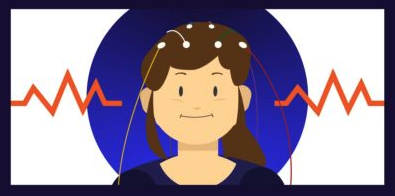Deciphering the Choices - and Codes - for In Home Video EEG
With the new year, the variety and value of video-EEG monitoring services are more evident than ever. Over the past 20 years, technological advances have increased the options available for EEG monitoring with concurrent improvement ineffectiveness and efficiency. Unfortunately, current procedural technology (CPT©) codes haven’t kept pace with the changes.
Until now.
As of January 1 of this year, new CPT© codes have been implemented which recognize the differences among continuously monitored, intermittently monitored, and unmonitored in-home video-EEGs. At Stratus, we have identified intermittently monitored in-home video-EEG as the best value for high quality, optimal testing for most patients. And we’ve made the appropriate modifications to ensure our services meet the new CPT© requirements for intermittent monitoring.
As a neurologist who has worked with referring physicians for nearly three decades, I know that determining – and now coding – the best form of EEG monitoring for a patient can be challenging. The push to reduce costs while providing high quality doesn’t make it any easier.
Let’s consider why intermittently monitored video-EEG is the logical choice for many patients. There are two main purposes for monitoring a long-term video-EEG:
- To preserve the data stream
- To allow for intervention if a clinical event occurs
If a patient’s condition is so unstable that an intervention will be necessary if a clinical event occurs, the long-term video-EEG should be conducted in an inpatient setting. Other situations dictating an inpatient evaluation include the need to reduce a patient’s anti-seizure medications in order to trigger a seizure (given the risk of status epileptics and the need for immediate intervention), and in the setting of a pre-surgical evaluation where skilled nursing interactions with the patient during a seizure can add critical information to the determination of the location of seizure onset. Because of the potential need for immediate intervention/interaction with these patient types, inpatient studies should be performed with continuous monitoring.
That leaves the preservation of the data stream as the purpose of monitoring long-term video-EEG in an outpatient setting. By monitoring both the EEG and the video, we can identify any problems that occur including the loss of an electrode, the mispositioning or breakdown of a camera or other technical issues. These can then be corrected by a field technologist dispatched to the patient’s home, and the testing can continue.
With intermittent monitoring, our technologists perform a real-time review of the patient’s data every two hours throughout the testing. If the data stream has been interrupted, we will send a technician out to resolve the issue. Intermittent monitoring ensures that the majority of the recording will contain valid data.
All the players in healthcare, including government, private payors, physicians, patients, and industry, continue to seek opportunities for value-based care. In this environment, intermittent monitoring of in-home long-term video-EEG fits the bill for keeping costs low while keeping quality high.
For more specifics on the exact CPT codes, please click here.
About the Author

Jeremy Slater, M.D., has worked in the field of epilepsy for more than 27 years and currently serves as the Chief Medical Officer for Stratus. He served as the director of the Texas Comprehensive Epilepsy Program from 2004 through 2017, growing the center from a single neurologist and neurosurgeon to one of the largest epilepsy surgery programs in the country. Dr. Slater earned his medical degree at the University of Pittsburgh School of Medicine, in Pittsburgh, PA. He completed his residency in neurology followed by a fellowship in epilepsy and clinical neurophysiology at the University of Miami School of Medicine in Miami, FL.



